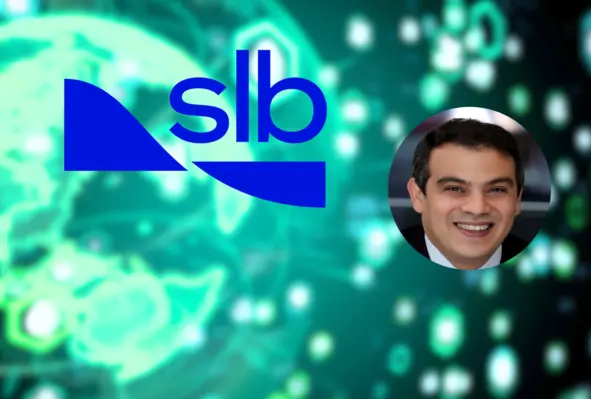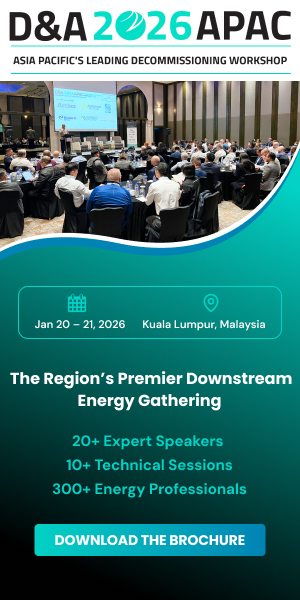In an exclusive interview, Tarek Rizk, president of the Middle East and North Africa (MENA) at SLB, discusses how the technology company is working with operators and partners across the region to improve production performance while decreasing emissions and cultivating new energy opportunities in geothermal
Oil Review Middle East (ORME): What technologies or services is SLB deploying in the Middle East to help oil and gas producers both grow their production and reduce their emissions?
Tarek Rizk: SLB has been in the MENA region for more than 85 years and we have built a strong reputation for technology innovation and operational excellence. Today, we’re applying our customer service mindset to collaborations with both our customers and partners to optimise production and accelerate decarbonisation through innovative and scalable solutions.
One of the ways in which we’re helping our customers reduce their footprint is through our portfolio of Transition Technologies, which have a quantifiable emissions reduction benefit. In 2022, these technologies saved more than 700,000 tons of carbon dioxide equivalent (CO2e) for our customers' operations globally. In MENA, we have vetted and deployed several solutions from this portfolio and our customers are seeing great success both in terms of performance improvement and emissions reduction.
Digital technology also plays a pivotal role in enhancing operational efficiency and sustainability, as well as boosting people performance. An excellent example of this is our strategic collaboration with ADNOC. Together, we're advancing the development of Intelligent Integrated Subsurface Modeling (IISM), a groundbreaking project harnessing the power of artificial intelligence (AI). The primary aim of IISM is to significantly accelerate field development planning, reducing the timeline from years to months. This substantial efficiency gain not only accelerates project delivery but also optimizes people performance by enabling teams to focus on higher-value tasks. Ultimately, this transformative technology empowers ADNOC to craft tailored solutions that maximize the performance potential of their reservoirs while streamlining operations for greater efficiency, which in turn supports a reduction in emissions.
ORME: What interest and progress are being shown in the region on CCUS, and what is SLB doing in this regard?
Tarek Rizk: The MENA region is showing significant interest in CCUS. The International Energy Agency (IEA) estimates that CCUS must remove more than 6 gigatons of carbon dioxide annually if the world is to reach net zero by 2050. To put things in perspective, the current CCUS capacity globally is just 45 million metric tons of carbon dioxide per year. Therefore, a very significant scale-up is required.
With so much scope for expansion, we’re partnering with companies to accelerate the industrialisation and scale-up of innovative solutions. For example, we are working hand-in-hand with Saudi Aramco and Linde in Saudi Arabia to develop a large-scale carbon capture and storage hub and remove up to 9 million tons of carbon dioxide as part of phase 1.
Moreover, SLB and Aramco are collaborating to develop a digital platform that will provide sustainability solutions for hard-to-abate industrial sectors by collecting, measuring, reporting and verifying their emissions, while also evaluating different decarbonisation pathways.
The MENA region offers ideal conditions for CCUS because of the availability of suitable reservoir conditions and because of the commitment of emitters and regulators in the region to abate emissions at an accelerated pace. CCUS stakeholders in the region have the will and are taking practical steps to accelerate emissions reduction in line with announced commitments for net zero. SLB is currently involved in 25 active CCUS projects globally, and we will continue to be a positive force in supporting CCUS projects in the MENA region.
ORME: To what extent is the reduction of methane emissions the low-hanging fruit, and how can technologies help with measuring, managing and reducing methane emissions?
Tarek Rizk: Historical methane emissions are responsible for 0.5° Celsius of the 1.1° Celsius that our planet has already warmed, and the oil and gas industry is one of the largest sources of methane emissions today. The good news is methane emissions are a fixable problem.
Many technologies are available today to identify and quantify methane emissions and to reduce those emissions once sources have been identified. In fact, the International Energy Agency (IEA) estimates that the oil and gas industry can reduce its methane emissions by 70% by 2030 using technologies available today. With multiple technologies in the market, getting started is sometimes the biggest hurdle.
In 2022, we launched SLB End-to-end Emissions Solutions (SEES) in part to address this need. What SEES does is provide customers with an end-to-end approach to emissions reduction that helps them make a plan for methane abatement and select the right combination of technologies to measure, and ultimately, eliminate methane emissions from their operations. At ADIPEC this year, our SEES business will be making an announcement about a game-changing technology advancement in this space.
ORME: How do you view prospects and opportunities for the growth of new energies in the region, and how is SLB involved?
Tarek Rizk: There is a shift toward renewable and sustainable sources. Several countries have set ambitious goals to increase renewable energy capacity and achieve net zero emissions.
One way we are leveraging our global footprint to help accelerate regional energy transition is via deep geothermal energy.
In the Middle East and North Africa, there's a growing interest in geothermal energy. We're actively partnering with national oil companies and other investors to formulate national strategies, focusing on detailed development of specific areas and evaluating the vast potential of geothermal resources.
SLB is collaborating with Oman’s Ministry of Energy and Minerals and the Oman Investment Authority in building a national strategy to develop the potential of Oman’s geothermal resources. This follows the completion of an extensive project to evaluate data from more than 7,000 oil, gas and water wells, with the objective of mapping sweet spots for geothermal prospects in the country. The next phase will include assessment of the economic feasibility of the development of potential geothermal resources. This collaboration between the Ministry of Energy and Minerals, Oman Investment Authority, and SLB is in line with Oman’s efforts to decarbonize the energy sector, achieve its net zero goal and implement Oman Vision 2040.









